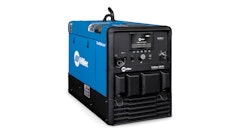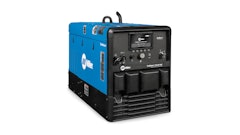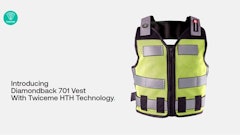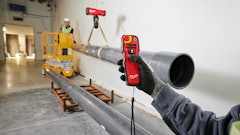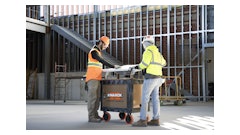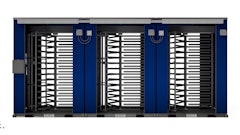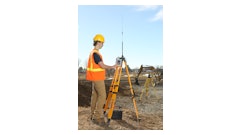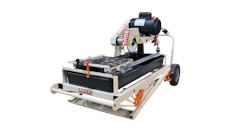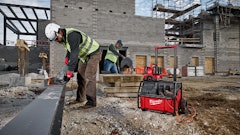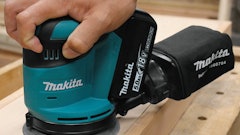
When it comes to acquiring a generator for a specific construction application, one of the most common mistakes contractors make is to do what they've always done.
"The old saying, 'This is the way we've done it for years,' should not be a guide when requesting a mobile generator for a project," says John Garcia, manager, Generator Development Americas, Doosan Portable Power. "Contractors need to be prepared to share as much information about their application as possible in order for the generator supplier to properly size the generator to the load."
Improper sizing can add to costs and potentially have negative effects on the generator and/or the tools it's powering.
Over-sizing can add to transport costs, fuel usage, noise levels and rental or purchase costs, says Erick Bernier, national product specialist at Wacker Neuson. "Under-sizing a generator [leads to] potential heat damage to the generator and tools," he adds. "No work can be done, equaling lost time and money."
"An under-sized generator, or one too small to handle the load, will place strain on the unit and cause a shutdown or, at worst, damage to the unit," Garcia indicates. "A generator that is too large for the load will eventually result in 'wet stacking', or a carbon buildup in the engine, causing a power loss. Subsequent loss in the generator's capability will follow."
The transition to Tier 4 Interim engines provides yet another motivation for proper sizing. According to Larry Fetting, general manager of the Americas Rental Segment for Cummins Power Generation, "Adequate heat is required in order for the emissions components to operate properly. A correctly sized generator will provide this needed heat. This is especially critical when working in arctic climates. If adequate heat is not maintained, additional maintenance of the emission components may be needed. In a worst-case scenario, an unplanned shutdown may occur."
Plan For the Unexpected
Most contractors have a pretty good understanding of their power needs for a particular project. However, this isn't always the case.
According to Bernier, it's not uncommon for users to forget to size for a motor starting surge. "Most portable (gasoline) generators are capable of surging from 1.5 to 2.0 times their continuous run rating (amps or watts)," he notes. "If the generator cannot start the tool or pump motor, then no work can be done on the jobsite."
A towable generator can typically surge between 2.5 to 2.8 times the continuous run rating, while maintaining a momentary voltage dip up to 30%. "If the momentary (300 milli-sec) voltage dip is greater than 30% of rated voltage, then some motor control circuits may disconnect and prevent the motor from starting," says Bernier.
"Requirements for starting motor loads are more exacting than starting resistive loads, like lights or a jobsite trailer," Garcia explains. "Also, when starting motors, a general rule to observe is that it normally takes three times the amperage from the generator to start a motor as it does to run it."
"If there are multiple motor loads, it is best to start them from the largest to smallest," Bernier advises. He suggests determining the worst-case surge by making a table listing each motor in order of startup. Total up all motor run ratings and circle the highest surge requirement. Typically, the highest surge is for the largest motor or the last motor starting plus the run rating of all other motors and loads. "Choose a generator that can run all loads and start the highest surge requirement. Add 10% to 20% to generator size for unknowns and additional loads that may be added later."
Come Armed with Information
It's important that the individual picking up a rental unit understand what is required. "Sometimes the person sent to rent a generator has limited to no information about the application," Bernier comments.
Prior to heading to the rental center, confirm requirements for voltage, amperage and single- or three-phase load. Neglecting to have any of this information in hand could result in bringing back the wrong size unit. For example, a customer asking for a "200-amp generator" could actually need a unit ranging in size anywhere from 30 to 166 kVA, depending on the specific load requirements.
In addition, make sure the generator has enough receptacles, and that the load will not exceed the amp rating of each receptacle. Ensure power cords are in good condition and sized correctly according to the generator operator manual. "Choosing incorrect power cords can overheat and overload both the generator and the tools powered," says Bernier.
When Over-sizing is Unavoidable
Running loads at less than 30% of generator rating can potentially cause wet stacking. Yet, running small loads can't always be avoided.
When this is the case, Bernier recommends running the generator with a full rated load for two to four hours to clean out the engine. If operating in cold ambient conditions where it may be difficult to achieve normal operating temperatures (190° F), he suggests increasing the load or running on a load bank to minimize the risk of wet stacking. However, he cautions that restricting air flow to raise engine temperature must be thermostatically regulated, and the air flow must be fully restored once engine temperature reaches 200° F.













